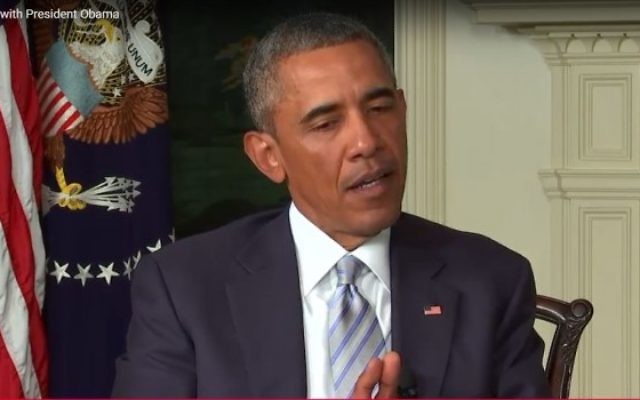Our View – A Good Deal
President Barack Obama has only four months left in office, but he has ensured that his legacy will influence U.S.-Israel relations long after he has retired to the world of golf games, presidential libraries and six-figure speaking fees.
Shortly before we went to press Tuesday, Sept. 20, Obama delivered his final address to the U.N. General Assembly. The speech provided one last public push for fellow world leaders to adopt the president’s vision of a world in which we’re able to talk through our differences and leave troops and tanks (if not drone strikes) behind.

Sure enough, Obama turned to the one conflict where words seem to fuel rather than defuse violence.
Speaking shortly after U.N. Secretary-General Ban Ki-moon warned that anything other than a two-state solution for Israel and the Palestinians would mean doom for both sides, the president scolded them for not doing much of anything to achieve such a solution.
“Surely Israelis and Palestinians will be better off if Palestinians reject incitement and recognize the legitimacy of Israel. But Israel must recognize that it cannot permanently occupy and settle Palestinian land,” Obama said. “We all have to do better.”
It was hardly the focus of his speech, but it encapsulated his policy: Keep telling both sides the obvious goals without providing much guidance on how to achieve them.
It appears that Obama will let those who view the Middle East through the lens of Israel judge his legacy on two things: the Iran nuclear deal and the new 10-year memorandum of understanding on U.S. military aid to Israel. It’s probably coincidental that we’ll be able to judge both deals around 2027.
Obama is confident that the Iran deal is a game-changer in the Middle East, but it’s far too soon to tell whether Iran truly will abandon its quest for nuclear weapons and stop being the No. 1 supporter of terrorism in the world.
Likewise, we can’t know whether the military aid agreement will make Israel stronger or weaker. The $38 billion total, starting Oct. 1, 2017, represents an increase of about $700 million a year in guaranteed aid to Israel, but it also closes off the opportunity for supplemental aid. Congress has almost routinely appropriated extra money for Israel’s missile defenses in recent years, so the actual increase is about $400 million a year.
The amount is not indexed to inflation, and it’s likely that $3.8 billion in 2027 won’t buy nearly as many spare F-35 parts and anti-missile projectiles as it does today.
Most important, the deal requires Israel by the end of the agreement to spend all that aid with U.S. contractors. Now, Israel may direct 26.3 percent of U.S. military aid to Israeli companies.
Most likely, because Israeli contractors operate on the cutting edge, the result will be more U.S.-Israeli corporate partnerships and U.S. subsidiaries operating in Israel, so the loss of jobs and expertise in Israel will be minimal.
It’s not a great deal, not after some members of Congress, such as Georgia’s David Scott, floated the idea of up to $5 billion a year in aid. And we’re leery of any boost in aid, which will give critics a bigger excuse to single out Israel for groundless allegations.
Still, given the realities of budgets and politics, it’s a deal both sides should be satisfied with. It even gives us more hope that the Iran deal will turn out well because the best guarantor of that agreement is an Israeli military with a quantitative edge.




comments